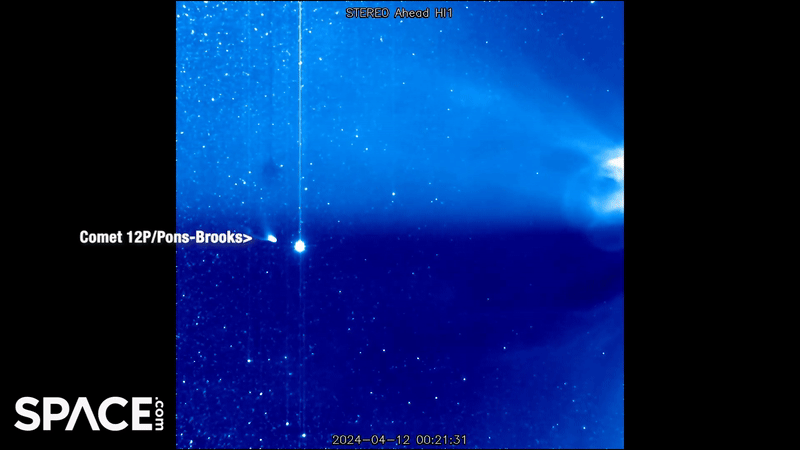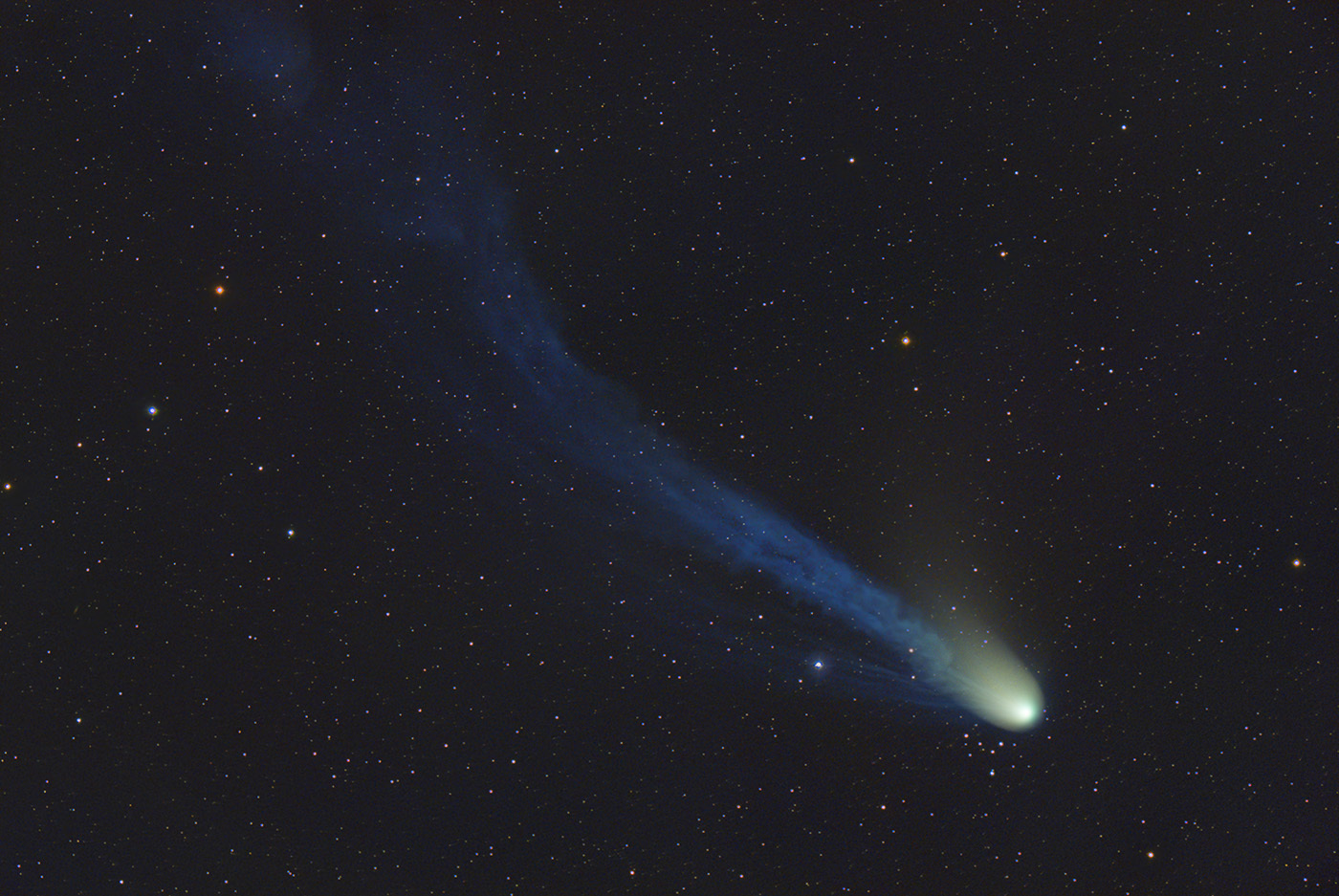
NASA's space-based solar observatory STEREO-A is keeping a close eye on 'Devil Comet' 12P/Pons-Brooks as it prepares to make its closest approach to the sun — known as perihelion — on April 21.
In this footage, the comet is passing by Jupiter from the observatory's perspective, just as a coronal mass ejection (CME), a large expulsion of plasma and magnetic field from the sun, launches into space.
CMEs form in a similar fashion to solar flares: They're the result of the twisting and realignment of the sun's magnetic field, known as magnetic reconnection. When these magnetic field lines 'tangle' they produce strong localized magnetic fields which can break through the sun's surface and release CMEs.
Related: 'Devil Comet' 12P/Pons-Brooks is heading for the sun. Will it survive?


Want to see comet 12P/Pons-Brooks for yourself? We recommend the Celestron Astro Fi 102 as the top pick in our best beginner's telescope guide.
In this NASA video, you can see a kink in the tail of comet 12P/Pons-Brooks, created during a 'disconnection event' triggered by a CME or strong gust of solar wind, according to Spaceweather.com. During a disconnection event, these solar outbursts can uproot a comet's tail and force it away from the comet.
The same kink is visible in this incredible image below captured by Chris Schur on April 9.
"The comet is a spectacular sight both in binoculars and with the camera from our northern Arizona location," Schur told Space.com.

"This image is our best shot yet at this wonder, the beautiful kinked blue gas tail follows the dusty amber-tinted coma shaped like a parabola as it heads for its coming perihelion" Schur continued.
On April 21, comet 12P/Pons-Brooks will pass within about 72.6 million miles (116.8 million km), of the sun, this is equivalent to three-quarters the Earth's distance from the sun.
The comet has gained much media attention in recent years due to its sudden glare ups in brightness and changing appearance.
Though the exact cause of these flares is unknown, Richard Miles of the British Astronomical Association thinks comet 12P/Pons Brooks may be one of 10 to 20 known comets that contain active ice volcanoes.
The 'magma' of these volcanoes is a cold mixture of liquid hydrocarbons and dissolved gasses, all trapped beneath a surface that has the consistency of wax, skywatching columnist and meteorologist Joe Rao previously reported. "These bottled-up volatiles can explode when sunlight opens a fissure," Rao explained.
Comet 12P/Pons-Brooks gained the moniker 'Devil Comet' when a large outburst on July 20, 2023, caused a shell of expanding gas surrounding the nucleus, known as the coma, to resemble some a horseshoe shape. After this, comet 12P/Pons-Brooks has been likened to a horseshoe crab, the Millennium Falcon from Star Wars and yes, you guessed it, the 'Devil Comet'.







